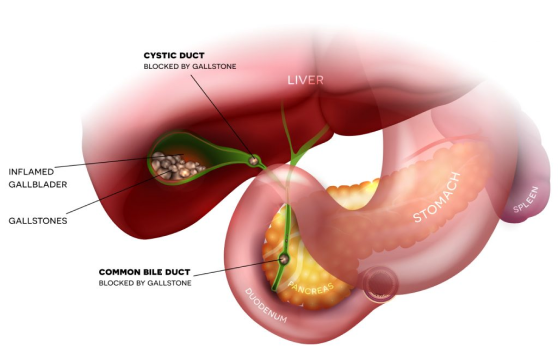What is Gall Stones?
Gallstones are small, hard deposits that form in the gallbladder, a small organ located beneath the liver. The gallbladder stores and releases bile, a digestive fluid produced by the liver that helps break down fats in the small intestine. Gallstones can be as small as a grain of sand or as large as a golf ball, and they can vary in number from one to several hundred.
There are two main types of gallstones: cholesterol stones and pigment stones. Cholesterol stones are the most common type and are usually yellow-green in color. They are formed when there is an excess of cholesterol in the bile. Pigment stones are made up of bilirubin, a substance that is produced when the body breaks down red blood cells. They are usually dark brown or black in color.
Gallstones can cause a range of symptoms, including abdominal pain, nausea, vomiting, and fever. Treatment may involve medications to dissolve the stones or surgery to remove the gallbladder.

Gall Stones surgery Benefits
The most common surgery to remove the gallbladder is called a laparoscopic cholecystectomy. The benefits of gallstone surgery, also known as cholecystectomy, include:
- Relief from pain and discomfort:
Gallstones can cause a range of symptoms, including abdominal pain, nausea, vomiting, and fever. Surgery to remove the gallbladder can provide relief from these symptoms and improve your quality of life. - Prevention of future complications:
If left untreated, gallstones can lead to serious complications such as inflammation of the gallbladder, blockage of the bile ducts, and pancreatitis. Surgery to remove the gallbladder can help prevent these complications. - Low risk of complications:
Laparoscopic cholecystectomy is a minimally invasive surgery that involves making small incisions in the abdomen. This approach is associated with a lower risk of complications, such as bleeding and infection, compared to traditional open surgery. - Fast recovery time:
Most people can go home the same day or the day after surgery and return to normal activities within a few days to a week. - No impact on digestion:
The gallbladder is not essential for digestion, and its removal does not affect the ability to digest food.
Gall Stones Procedure
The procedure to remove gallstones depends on the size, number, and location of the stones, as well as the severity of symptoms. In most cases, gallstones are treated with surgery to remove the gallbladder, a procedure known as cholecystectomy.
- Laparoscopic cholecystectomy:
This is the most common type of gallstone surgery. It involves making several small incisions in the abdomen and inserting a laparoscope, a small instrument with a camera and light, to see inside the body. The surgeon then removes the gallbladder through one of the incisions. - Open cholecystectomy:
In rare cases, if laparoscopic cholecystectomy is not possible, an open surgery may be necessary. This involves making a larger incision in the abdomen to remove the gallbladder.
In general, a laparoscopic cholecystectomy, which is the most common type of gallstone surgery, typically takes between 30 minutes to 2 hours. An open cholecystectomy, which is a more invasive procedure, may take longer, usually between 1 to 2 hours.
Frequently asked questions
Gallstones may form if bile contains too much cholesterol, too much bilirubin, or not enough bile salts.
Common signs and symptoms of gallstones may include: Nausea and vomiting, Bloating and indigestion, Pain in the right shoulder or back, Clay-colored stools, Dark urine, Jaundice (yellowing of the skin and whites of the eyes).
Emergency gallbladder removal is recommended in cases of severe infection and gallbladder rupture. You may have to wait a few days or a week to get the proper blood work, x-rays, and tests done in case of an elective procedure. The doctor may also recommend a two-week delay for certain medications to clear your system.
Take charge of your health today. Schedule an appointment.
BOOK A SITTING

